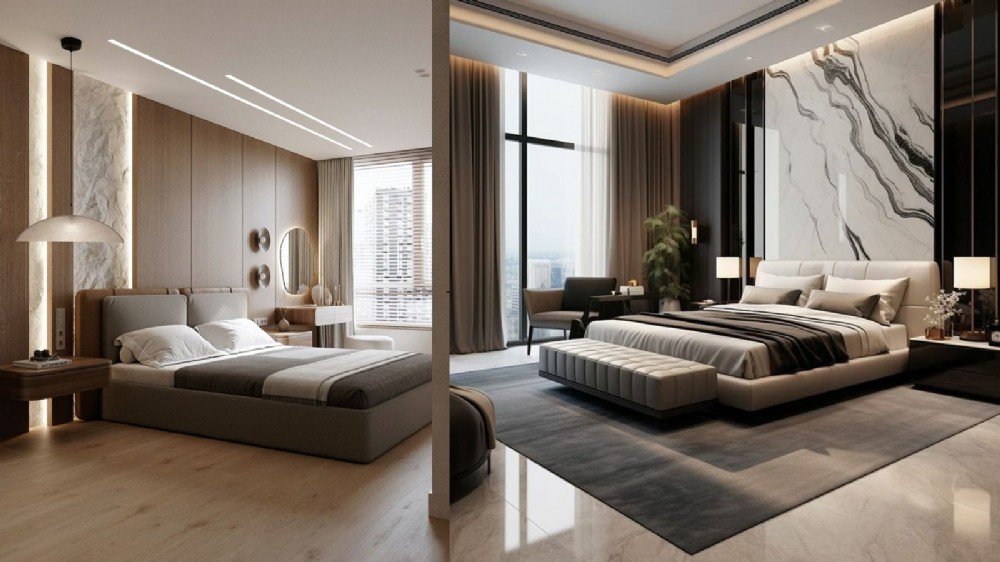Bedroom Design: A Delicate Balance Between Aesthetics and Functionality

Bedroom design requires a thoughtful approach that considers both aesthetics and functionality. This space, where individuals rest, rejuvenate, and create their personal living environment, must focus on enhancing user comfort. In this design, a balance must be achieved while considering the size of the space, functionality, aesthetics, and personal preferences.
Space Organization and Flow
The primary consideration in bedroom design is organizing the space in a functional and comfortable way. The central element of the room is typically the bed, and its placement should be done according to the size of the room. The bed should be positioned in a way that aligns with the general layout of the room and the headboard should rest against the wall. Sufficient space should be left around the bed to allow for ease of movement, and generally, at least 60 cm of space is recommended around the bed to allow the user to easily get in and out and move freely within the room. Additionally, the placement of the headboard should be in harmony with the room’s light sources and natural views.
Material Selection and Texture Harmony
The bedroom should be a space that creates a calming and restful atmosphere, so the materials and textures used must contribute to a peaceful environment. Soft, natural materials should be preferred. Organic materials such as wood, natural stone, wool, cotton, and linen create both an aesthetic and a healthy living space. Wood, leather, or fabric-covered options for the headboard and furniture add warmth and luxury to the space, while also considering durability. In addition, opaque curtains or tulle systems that harmonize with natural light can be used in the bedroom. Bedding, pillows, and rugs should prioritize comfort and texture harmony.
Color Selection and Lighting
The color palette should aim to create tranquility and serenity in the bedroom. Soft, pastel tones such as white, light gray, beige, and sea green help the room feel airy and contribute to a relaxing atmosphere. However, a combination of different textures and colors can also create depth and character in the room. Lighting design is an important element that shapes both the function and the atmosphere of the room. Lighting around the headboard can be arranged to create a comfortable reading environment. Additionally, hidden lighting systems or dimmable lamps allow for adjustable light intensity, so the room can adapt to different usage scenarios. In the bedroom, warm white light tones create a relaxing effect, while more vibrant tones can provide an energetic atmosphere.
Furniture and Storage Solutions
The functionality of the room's layout is one of the most important aspects of the design. Furniture should be both aesthetically pleasing and functional, creating storage space without disrupting the overall layout. Elements such as wardrobes, nightstands, dressers, and the bedhead should be included in the design, with each piece being proportional to the room’s scale. The height of the bedhead should be designed to provide a comfortable view when getting up, typically between 100-120 cm. Nightstands should be placed symmetrically on either side of the bed, generally 40-50 cm wide and 30-40 cm deep. Dressers or consoles should be 90-120 cm high, offering functional space for personal belongings. The bed should typically be 180 cm wide and 200 cm long, providing a comfortable sleeping area. Additionally, integrated closet solutions or wall shelves can be used to create functional storage areas.
Conclusion
In conclusion, bedroom design should be based on a balanced understanding of comfort, functionality, and aesthetics. Every detail should serve the room’s intended purpose and create a relaxing, restful atmosphere. From material selection to color palette, furniture dimensions to lighting planning, every stage should be carefully designed with user comfort in mind.
